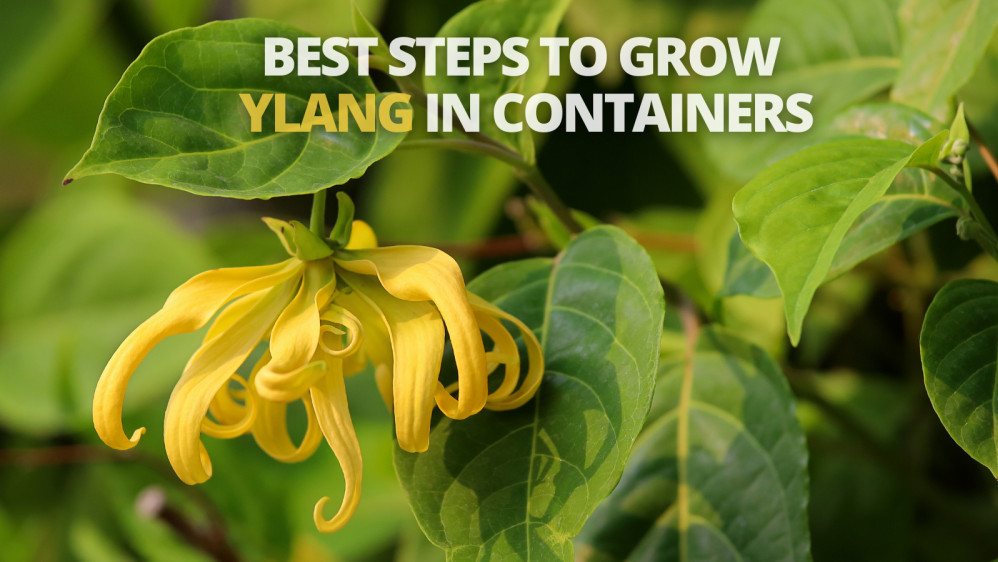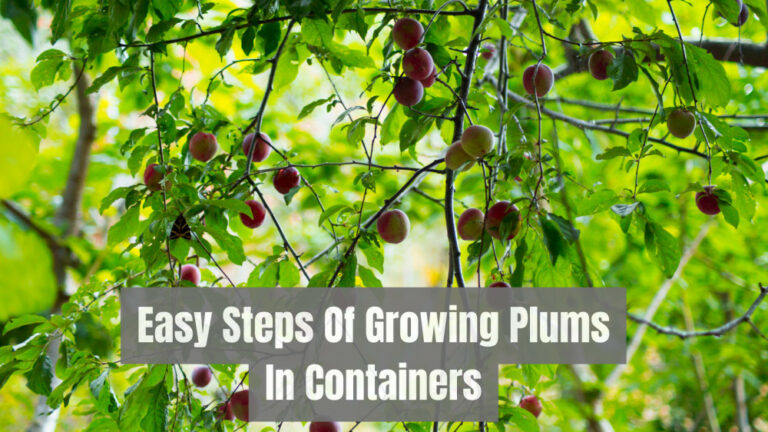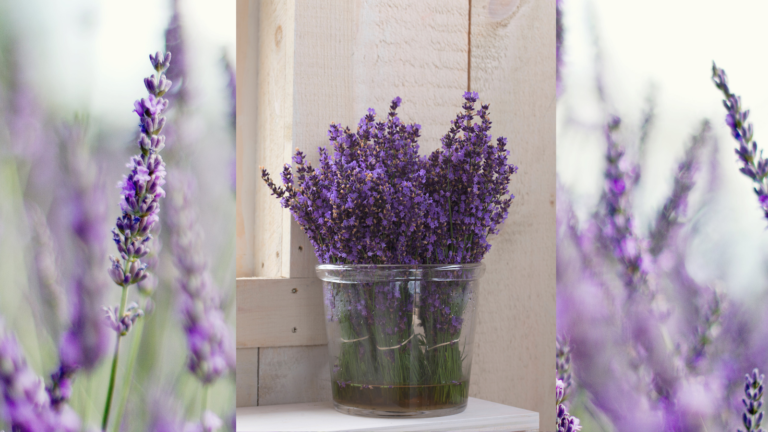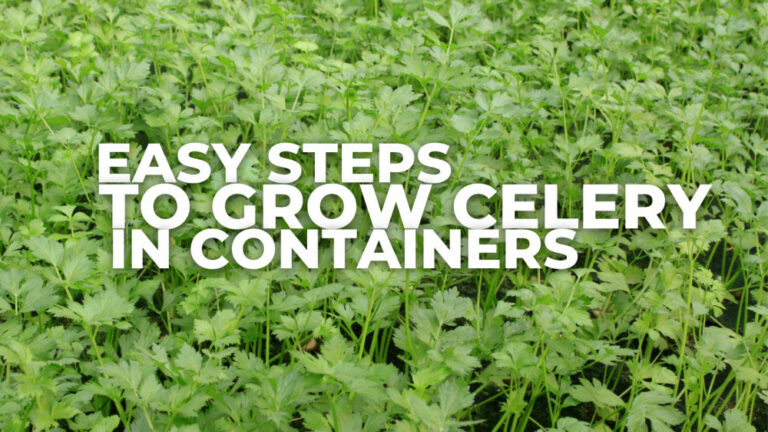Best Steps To Grow Ylang In Containers
Best Steps To Grow Ylang In Containers
When it comes to scent trees, it's difficult to beat a dwarf ylang-ylang tree (Cananga odorata var. fruticosa).
The tropical evergreen blossoms give Chanel No. 5 and other floral perfumes their signature scent.
Anyone who lives in a warm climate can think about cultivating a dwarf ylang-ylang tree in a container to enjoy those gorgeous ylang-ylang flowers. The blog will help you to grow Ylang in containers perfectly.

History & Origin Of Ylang
The ylang-ylang blooms are often used as decorations, whether incorporated into hairstyles or wreaths or just placed in spaces to add scent.
In the 1600s, European explorers learned about ylang ylang; through time, the smell spread throughout Europe. Because of its rising popularity, ylang-ylang has started to affect interior design.
A blend of coconut or palm oil, ylang-ylang essential oil, and a few additional oils, called Macassar oil, was created around 1783 by a barber by name of Alexander Rowland. It was claimed to encourage the growth of shiny, lustrous hair.
If you respect your furniture, you must use antimacassars, which are colourful cloth drapes for the tops of chairs that prevent macassar oil from adhering to them.
The blooms of ylang-ylang are often used as decorations, whether incorporated into hairstyles or wreaths or just placed in spaces to add scent.
In the 1600s, European explorers learned about ylang ylang; through time, the smell spread throughout Europe.
Because of its rising popularity, ylang-ylang has started to affect interior design.
A blend of coconut or palm oil, ylang-ylang essential oil, and a few additional oils, called Macassar oil, was created around 1783 by a barber by name of Alexander Rowland.
It was asserted to stimulate the development of glossy, shining hair.
If you respect your furniture, you must use antimacassars and colourful cloth drapes for the tops of chairs that prevent macassar oil from adhering to them.
According to Ayurvedic tradition, ylang-ylang essential oil has relaxing, cooling, energizing, and moisturizing properties.
To correct Vata imbalances, ylang-ylang essential oil promotes self-worth, serenity, relaxation, and sensuality.
The calming, cooling nature of ylang-ylang can aid in the release of rage and unneeded tension in those with pitta imbalances.
The essential oil of ylang-ylang is said to calm, tone, and balance the complexion and assist in moisturizing hair.
The aroma is said to help calm and harmonize the mind and spirit and promote sensuality and love.
The Tagalog term “ilang,” which means wilderness, is where ylang ylang derives from. It might also be connected to the word “ilang-ilan,” which means uncommon. “Flower of blossoms” is a standard translation for ylang ylang.
In Philippine myth, Ilang, a beautiful girl, falls in love with a man she does not intend to marry, resulting in the blossoming, magnificent ylang-ylang tree.
She turns into a tree (immediately, in some versions, or after she dies, in others) before they can be together, to the cries of her lover, “Ilang! Ilang!”
Anthropologist Margaret Mead noticed that ylang ylang was frequently strewn across newlywed couples' beds while travelling across the South Pacific. The rumour that ylang-ylang has sexual properties may not be entirely coincidence.
Ylang-ylang is linked to Venus in Wicca, according to legend. The aroma of ylang-ylang is supposed to help reduce anxiety and boost self-confidence. It can also be used as a love charm.
It is also employed in spells that are said to evoke a serene, meditative state because of the fragrance's calming and tension-reducing properties.
It is also claimed to be effective in eradicating bad feelings and ideas. Combining its calming and love-promoting qualities, ylang-ylang is also said to support self-acceptance and self-love.
Health Benefits Of Ylang
Ylang-ylang essential oil has antidepressant, antiseborrheic, antibacterial, aphrodisiac, nervine, and sedative characteristics, contributing to its beneficial health effects. In addition, it helps control high blood pressure.
This essential oil was not well recognized until recently. Still, as millions of cosmetics goods and their commercials flooded the global media, they quickly gained widespread recognition and became a favourite of aromatherapists.
1. Antidepressant
Research from 2006 indicates that ylang-ylang essential oil helps treat human depression, so aromatherapy frequently employs it.
Anxiety, melancholy, and ongoing tension are all banished by it since it fights depression and soothes the body.
Additionally, it uplifts the spirit and fosters feelings of joy and hope. After a shock or accident, it may be a helpful treatment for people experiencing nervous breakdowns and acute depression.
2. Antiseborrheic
Sebaceous gland dysfunction results in seborrhea or seborrheic eczema, a medical condition. Sebum production becomes erratic due to this disorder, and the epidermal cells become infected.
Since the white or pale yellow skin begins to peel off, whether dry or oily, it appears to be quite painful. This frequently occurs on the scalp, cheeks, brows, and other areas where hair follicles are present.
A 2017 study on using essential oils like ylang-ylang essential oil for treating skin conditions can help treat eczema.
Additionally, regulating sebum production and treating the illness helps lessen acne, dermatitis, and skin irritation.
3. Antiseptic
Cuts, abrasions, and burns can potentially become infected with different bacteria, leading to a septic wound.
If an iron instrument causes the injury, the risk of complications increases since tetanus bacteria is still likely to infect the wound.
Research shows that ylang-ylang essential oil helps clean wounds and suppress microbial development, preventing sepsis and tetanus.
This quality also shields wounds from bacterial, viral, and fungal infections. Additionally, it hastens the wound's recovery.
4. Lowers High Blood Pressure
According to a study on the effects of ylang-ylang on blood pressure published in the Journal of Exercise Rehabilitation, it is effective for treating hypertension and other heart conditions.
Ylang-ylang oil has recently emerged as a simple and all-natural treatment for high blood pressure, which has become a significant public health problem and for which medications have adverse severe health side effects. Consuming the recommended dosages has no harmful side effects on health.
5. Nervine
The neurological system benefits from using ylang-ylang essential oil. Studies have shown that the aroma of ylang-ylang essential oil can activate the nervous system and aid in healing after damage.
Additionally, it relieves nerve strain and guards against the development of several neural illnesses.
6. Ylang-Ylang Oil Reduces Microbial Growth
Aromatic oil By preventing microbial development and cleaning wounds, ylang-ylang can aid in the prevention of sepsis and tetanus.
Any damage caused by cuts, abrasions, or burns can become infected with different bacteria and septic.
The risk of repercussions rises when an injury is made by an iron object since there is still a chance that it will become infected with tetanus germs.
Your wounds are guarded against fungal, bacterial, and microbial infections by ylang-ylang essential oil. Additionally, it facilitates a faster rate of wound healing.
7. Stress Buster
For those who have given up on sex because of a heavy workload, work-related stress, despair, or the impacts of pollution, ylang-ylang oil is beneficial.
Losing libido or frigidity is an increasing issue in the modern world, but using pure essential oils like ylang-ylang can help you regain your sex drive.
A natural impotence cure, ylang-ylang, has been demonstrated to promote virilization in both men and women.
Diffuse ylang-ylang in your room to feel closer to those around you (such as your partner or family), inhale it straight from the bottle, mix a drop into your body lotion, or even dab a little on your linens or collar.
8. Improves Skin And Hair Health
Historically, ylang-ylang has been applied to skin care products to treat acne. According to some reports, it can stop the acne-causing bacteria from working.
The use of ylang-ylang oil in cosmetic and skin care products has been widespread despite the lack of scientific data.
The oil is a typical component of numerous commercial skin and hair care products. Creams, perfumes, massage oils, and moisturizing creams all include it.
According to the claims, it would moisturize dry skin and enhance skin cell regeneration. The oil might also lessen wrinkles and fine lines.
Aromatherapy could help to promote a healthy scalp. It might improve scalp health and possibly reduce hair loss.
9. Sedative
According to a study by Silva MJ, the health advantages of ylang-ylang essential oil include reducing tension and anxiety.
According to studies, ylang-ylang oil promotes relaxation by sedating and calming nerve disorders, stress, anger, and anxiety.
Grow Ylang In Containers
Southeast Asia is the home of the ylang ylang tree (Cananga odorata), an evergreen with rapid growth.
It thrives in zones 10 to 12 of the U.S. Department of Agriculture's plant hardiness map. These trees have few issues and require little maintenance in the ideal climate.

Container Requirements
A dwarf ylang-ylang tree with a height of around 6 feet, variation fruticosa (2 m.). Growing it in a container is the ideal situation.
The miniature variety never bears fruit but blooms all year long. When planted outside, ylang-ylang trees grow at a rate of at least five feet per year.
They swiftly develop into big, mature shade trees great for lounging beneath during hot summer days when they reach 40 to 60 feet tall.
Soil Requirements
Selecting the right potting mix for Ylang-Ylang is fundamental to ensuring its health and vitality. Ylang-Ylang thrives in soil with two key qualities: excellent drainage and a slightly acidic pH.
To achieve this, you can choose a high-quality potting mix specifically formulated for tropical plants.
These mixes typically provide the ideal balance of drainage and acidity to mimic the tree's native habitat.
If a specialized combination isn't readily available, you can create a suitable blend by incorporating regular potting soil with additives like perlite or sand.
These materials enhance drainage, preventing root rot by allowing excess water to escape.
By focusing on the soil's composition, you create an environment that encourages strong root development and vibrant growth, ensuring your Ylang-Ylang flourishes in its container home.

Planting
When reproducing, it is preferable to grow ylang-ylang from seed instead of cuttings. For this, soak the seeds in warm water for 30 minutes before planting to hasten the process, and then plant them ⅛ inch deep in high-quality, slightly acidic potting soil.
Till germination, keep the soil wet. The method of germination is protracted (sometimes up to four months).
Although it also does well in some shade, it blooms less and is best suited for a south-facing sunny location. Water it until the top one or two inches of soil are dry.
Ylang-Ylang, like all tropical plants, needs high humidity to produce more fragrant blossoms. It blooms all year and grows better if planted in a humid environment or greenhouse.

Watering Requirements
Proper watering is critical to Ylang-Ylang care, as maintaining the right soil moisture level is essential for its well-being.
Ylang-Ylang prefers consistently moist soil, but it's crucial to avoid waterlogging, which can lead to root rot. To achieve this balance, regularly monitor the soil's top inch (2.5 cm).
When it feels dry to the touch, it's time to water. Use a gentle, slow watering technique, allowing the water to penetrate deeply into the root zone.
Ensure that the container has adequate drainage holes to allow excess water to escape, preventing the roots from sitting in standing water.
During hot and dry periods, you may need to water more frequently, but always adjust based on the specific moisture needs of your Ylang-Ylang.
This attentive approach to watering helps maintain an optimal environment for root health, ensuring that your Ylang-Ylang thrives in its container.
Spacing
You can plant it up to 8 feet from the house because it doesn't develop a big canopy. Move 6 to 8 feet away from pathways and roads.
Because of its potent perfume, which is thought to be discernible from 30 feet away, you should only plant one of these because more could be overwhelming to the senses. Ylang ylangs will develop in large containers while they are young.

Fertilizer
Treat the ylang-ylang tree once a month from late spring to late summer with half the suggested amount of balanced bloom fertilizer.
These fertilizers often contain little to no nitrogen, which promotes blooming throughout the growing season rather than foliage growth.
Pruning
The optimum time to prune the tree is when it is not actively blooming or forming flower buds.
You don't diminish the tree's typically abundant bloom production unless you collect flowers. However, ylang-ylang plants can bloom all year round in warm climates.

Plant Care
A newly planted ylang-ylang tree requires daily irrigation. After a few weeks, you can decrease watering, but if it doesn't rain, you still need to water frequently to maintain the soil's moisture.
The tree thrives in a humid environment that resembles its native regions. Use a balanced fertilizer to fertilize the tree three times a year. The tree doesn't require fertilization during the winter.
There aren't any significant threats from diseases or pests to the tree. Trees of the ylang-ylang kind can withstand wind.
However, they struggle in cold climates and with cold winds. They can tolerate brief cold spells, but because of their size, freeze protection is impractical.
Pruning is not necessary for ylang-ylang trees. You can prune them if you'd like to keep them more manageable.
An alternative is to pinch the top of a young tree and regularly prune it to promote more shrub-like development.
Ylang Tree Considerations
Is it possible to grow ylang-ylang indoors? Although the dwarf variety of ylang-ylang may flourish in an indoor greenhouse, the adult ylang-ylang tree is generally too big to grow in a container.
Consider cultivating ylang-ylang as a bonsai if you enjoy regular pruning and trimming.
Ylang-ylang plants produce flowers that emerge from the tree with a golden tint after reaching maturity as green flowers.
These blossoms, which have a strong perfume and are considered one of Chanel No. 5's fragrances, are pretty.
Growing just one of these trees is usually better because the aroma can get too intense.
The dwarf version does not set fruit like the more significant type and has fewer fragrant blossoms. Trees bloom throughout the years, and the aroma is typically more potent at night.
Pests & Diseases Of Ylang
It is a plant devoid of problems. Insects like flower-eating beetles, aphids, leaf borers, and spider mites could attack it.
You can keep these pests away from your Ylang-Ylang tree by reading this article to find out how.

Harvesting
There is more to it than that, though. You must know the ideal time of day to select the flowers, leaves, or the entire plant in the field.
To decide the perfect time to extract the most significant amount of essential oil, you must know the best time of day to harvest, when the Brix measurement, which measures the glucose levels in the plant, is the highest.
For instance, the optimal time to harvest ylang-ylang blossoms is between midnight and four in the morning when the Brix measurement is maximum. However, it is challenging to choose at that time.
We should harvest from daylight until 10 a.m. because, after that point, we will start to lose some of the oil as it leaves the blooms and returns to the branches.
The oil has returned to the tree during the day's heat to prevent the tree from dehydrating, so the fragrance won't be as strong when we smell the blossoms in the afternoon.
The oil then returns to bloom at night as the temperature drops. It is pretty fascinating to observe how the tree maintains itself.
Conclusion
Ylang oil is used topically on the skin to improve the desire for sexual activity, reduce blood pressure, and promote relaxation.
It is also a component of a head-lice-killing combination spray. Aromatherapy uses the scent of ylang-ylang oil to improve memory and thinking capabilities.
I trust you enjoyed this article on the Best Steps To Grow Ylang In Containers. Please stay tuned for more blog posts to come shortly. Take care!
JeannetteZ
>>>Please click here to read my all-inclusive article about Container Gardening<<<
>>>Are you interested in homegrown herbs and medicine? Please click here to find out more about it!<<<
Your Opinion Is Important To Me
Thoughts? Ideas? Questions? I would love to hear from you. Please leave me your questions, experience, and remarks about this article about the Best Steps To Grow Ylang In Containers in the comments section below. You can also reach me by email at Jeannette@Close-To-Nature.org.
Disclosure
This post may contain affiliate links. As an Amazon Associate and other affiliate programs, I earn from qualifying purchases at no extra cost to you. Read my full affiliate disclosure.
You might also enjoy these blog posts:
Best Steps To Grow Cloves In Containers
Best Steps To Grow Eucalyptus In Containers
Best Steps To Grow Acai In Containers
Best Steps To Grow Jasmine In Containers
Best Steps To Grow Valerian In Containers








